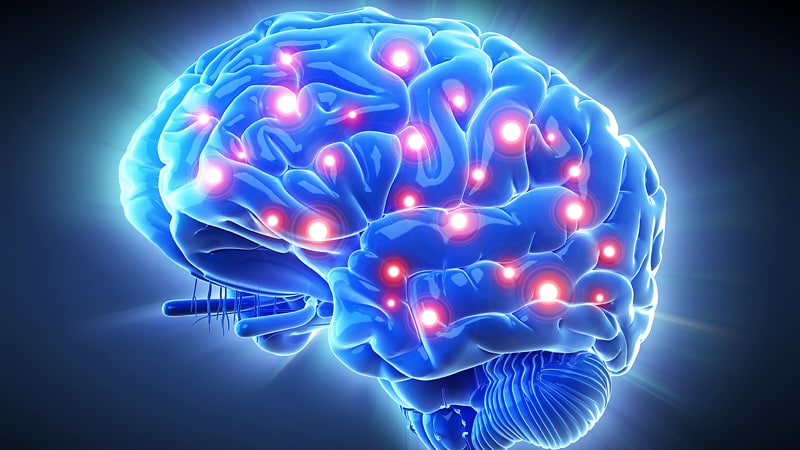Researchers have identified five cognitive phenotypes among patients with multiple sclerosis (MS). The lead researcher described the clinical characteristics and MRI findings unique to each phenotype during a lecture at the Joint European Committee for Treatment and Research in Multiple Sclerosis–Americas Committee for Treatment and Research in Multiple Sclerosis (ECTRIMS–ACTRIMS) 2020, this year known as MSVirtual2020.
Between 40% and 70% of patients with MS have cognitive impairment, and the current results emphasize the importance of cognitive evaluation in clinical assessment, according to the investigators. “The identification of cognitive profiles can drive tailored rehabilitative strategies and introduce a new level in the evidence of disease activity assessment,” said Ermelinda De Meo, MD, a neurologist and PhD student at San Raffaele Hospital in Milan. Physical disability has been a major influence on treatment choices to date, but neurologists should consider that patients with minimal physical disability may have cognitive impairment, she added.
Information processing speed and episodic memory are the most commonly impaired cognitive functions in patients with MS, but executive function, verbal fluency, and visuospatial abilities also can be affected. Defining the neuroanatomical basis of cognitive dysfunction and developing effective strategies for rehabilitation requires a clearer understanding of cognitive deficits on an individual level, said Dr. De Meo.
A battery of clinical and imaging tests
She and her colleagues analyzed 1,212 patients with all forms of MS who presented to eight Italian centers. They also included 196 age-, sex-, and education-matched controls in their study. Patients underwent evaluation with the Expanded Disability Status Scale (EDSS) and a neuropsychological assessment that included Rao’s Brief Repeatable Battery and Stroop Test. The investigators also administered the Fatigue Severity Scale (FSS) and Montgomery Åsberg Depression Rating Scale (MADRS).
A subset of 172 patients with MS and 50 healthy controls underwent 3-T MRI. Dr. De Meo and colleagues examined T2 hyperintense and T1 hypointense lesion volumes. In addition, they quantified normalized brain volume, white matter volume, and gray matter volume and performed deep gray matter segmentation.
The subset of patients with MS who underwent MRI was not significantly different from the full cohort of patients with MS in the study, said Dr. De Meo. Because of the relatively small number of subjects who underwent MRI, she and her colleagues used simple MRI measures that are well validated, highly reproducible, and less susceptible to measurement error. “We know that advanced MRI technique could provide additional insights about the neural bases of these phenotypes. However, we can consider our MRI results as a starting point to better address future MRI studies,” she said.
Phenotypes had specific neural bases
The mean age did not differ significantly between patients (41.1 years) and controls (40.4 years). The sex ratio also was similar in both groups. Patients’ median EDSS score was 2.0, mean disease duration was 10.5 years, mean FSS score was 14.9, and mean MADRS score was 10.1.
The five cognitive phenotypes among patients with MS were characterized by preserved cognition (19%), mild verbal memory or semantic fluency impairment (30%), mild multidomain impairment (19%), severe attention or executive impairment with mild impairment of other domains (14%), and severe multidomain impairment (18%). Compared with patients with other phenotypes, those with preserved cognition and those with mild verbal memory or semantic fluency impairment were younger and had lower clinical disability and shorter disease duration. Patients with severe multidomain impairment had greater depressive symptoms. Patients with severe attention or executive phenotypes had higher FSS scores.
On MRI, patients with preserved cognition had lower thalamic volume than healthy controls. The researchers compared all other phenotypes to these two groups. Patients with mild verbal memory or semantic fluency impairment had reduced hippocampal volume. Patients with mild multidomain impairment had reduced cortical gray matter volume. Patients with severe attention or executive impairment had higher T2 lesion load. Patients with severe multidomain phenotypes had a broader pattern of atrophy, including decreased volume in the gray matter, white matter, thalamus, hippocampus, putamen, and nucleus accumbens.
“The present findings suggest that specific neural bases can be detected for each phenotype,” said Dr. De Meo. “Advanced and multimodal MRI techniques of analysis could help individuate the neural circuits and the neurotransmitter involved, also suggesting potential targets for the pharmacological treatment of cognitive decline.”
A need for longitudinal cohort studies
The study by Dr. De Meo and colleagues continues previous investigations of cognitive phenotypes in MS, which originally considered cognition to be either intact or impaired. Further research could “inform the development of targeted treatments for cognitive dysfunction in MS, which will ultimately bring us closer to a precision medicine model,” said Victoria M. Leavitt, PhD, of Columbia University Medical Center in New York.
“Clearly, we have to acknowledge that cognitive impairment is not a one-size-fits-all problem,” she added. “If a memory problem develops as a downstream consequence of language issues, targeting the hippocampus may not be effective. Separating patients into cognitive phenotype groups may be a key to understanding and identifying neural-level differences that underlie diverse cognitive issues.”
The evolution of cognitive changes over time must be understood clearly, because patients may develop memory impairment by separate pathways (e.g., focal lesions that precipitate hippocampal atrophy versus cortical thinning in parietal regions that result in white-matter disconnections among language regions), said Dr. Leavitt. “Longitudinal cohort studies and … testable mechanistic models that incorporate multimodal neuroimaging metrics are an essential starting point. Machine-learning methods may also be a useful tool for beginning to look at how these different neuroimaging modalities work together dynamically to yield divergent cognitive phenotypes.”
The study was not supported by external funding. Dr. De Meo reported no relevant disclosures. Dr. Leavitt also reported no relevant disclosures.
SOURCE: De Meo E et al. MSVirtual2020, Abstract YI02.03.
